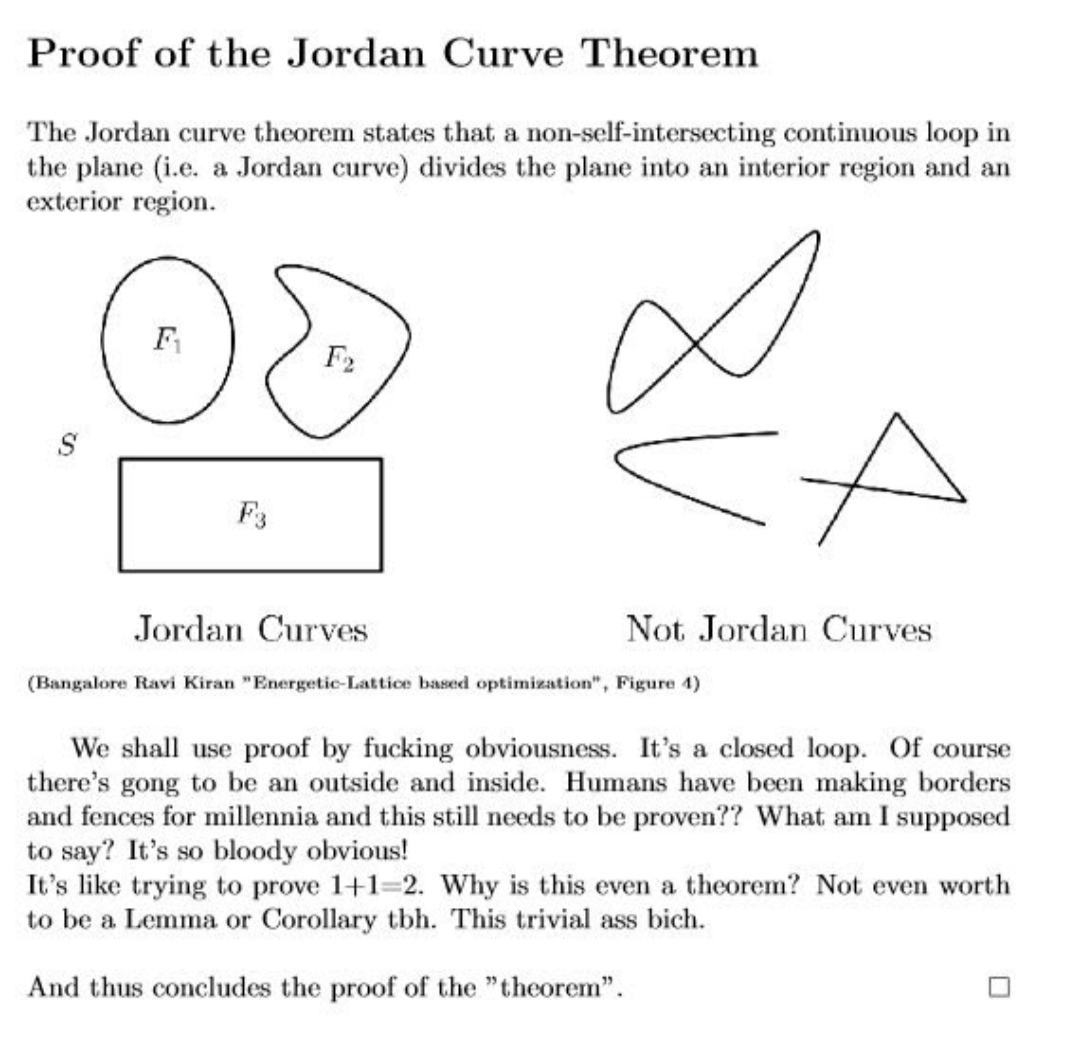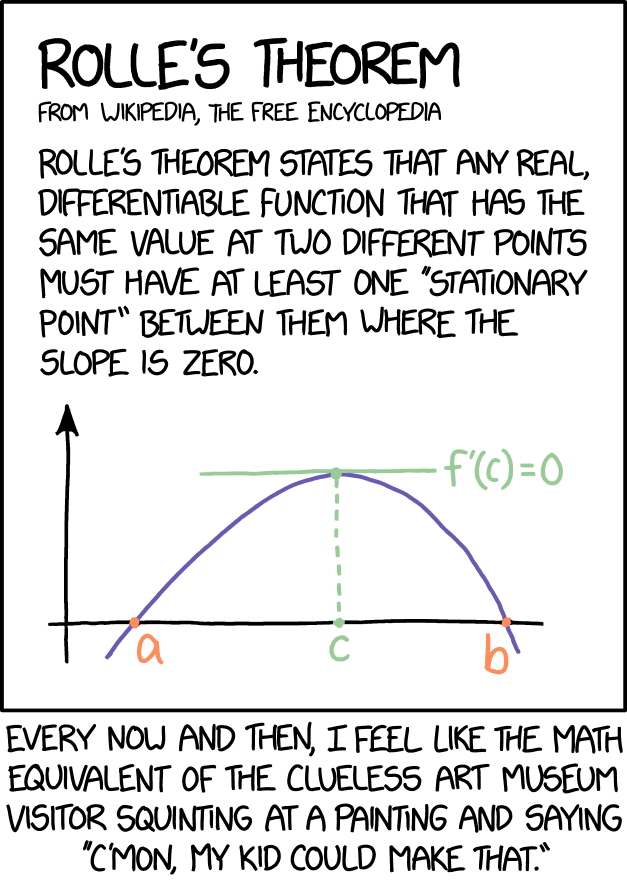Math Memes
Memes related to mathematics.
Rules:
1: Memes must be related to mathematics in some way.
2: No bigotry of any kind.
It's all jokes and fun until you meet Riemann series theorem
yea this is one of those theorems but history is studded with "the proof is obvious" lemmas that has taken down entire sets of theorems
Yeah, the four color problem becomes obvious to the brain if you try to place five territories on a plane (or a sphere) that are all adjacent to each other. (To require four colors, one of the territories has to be surrounded by the others)
But this does not make for a mathematical proof. We have quite a few instances where this is frustratingly the case.
Then again, I thought 1+1=2 is axiomatic (2 being the defined by having a count of one and then another one) So I don't understand why Bertrand Russel had to spend 86 pages proving it from baser fundamentals.
Then again, I thought 1+1=2 is axiomatic (2 being the defined by having a count of one and then another one) So I don’t understand why Bertrand Russel had to spend 86 pages proving it from baser fundamentals.
It is mathematic. Of course it has to be proved.
Yeah, the four color problem becomes obvious to the brain if you try to place five territories on a plane (or a sphere) that are all adjacent to each other.
I think one of the earliest attempts at the 4 color problem proved exactly that (that C5 graph cannot be planar). Search engines are failing me in finding the source on this though.
But any way, that result is not sufficient to proof the 4-color theorem. A graph doesn’t need to have a C5 subgraph to make it impossible to 4-color. Think of two C4 graphs. Choose one vertex from each- call them A and B. Connect A and B together. Now make a new vertex called C and connect C to every vertex except A and B. The result should be a C5-free graph that cannot be 4-colored.
Then again, I thought 1+1=2 is axiomatic (2 being the defined by having a count of one and then another one) So I don't understand why Bertrand Russel had to spend 86 pages proving it from baser fundamentals.
Well, he was trying to derive essentially all of contemporary mathematics from an extremely minimal set of axioms and formalisms. The purpose wasn't really to just prove 1+1=2; that was just something that happened along the way. The goal was to create a consistent foundation for mathematics from which every true statement could be proven.
Of course, then Kurt Gödel came along and threw all of Russell's work in the trash.
Saying it was all thrown in the trash feels a bit glib to me. It was a colossal and important endeavour -- all Gödel proved was that it wouldn't help solve the problem it was designed to solve. As an exemplar of the theoretical power one can form from a limited set of axiomatic constructions and the methodologies one would use it was phenomenal. In many ways I admire the philosophical hardball played by constructivists, and I would never count Russell amongst their number, but the work did preemptively field what would otherwise have been aseries of complaints that would've been a massive pain in the arse
Someone had to take him down a peg
Smarmy git, strolling around a finite space with an air of pure arrogant certainty.
A lot of things seem obvious until someone questions your assumptions. Are these closed forms on the Euclidean plane? Are we using Cartesian coordinates? Can I use the 3rd dimension? Can I use 27 dimensions? Can I (ab)use infinities? Is the embedded space well defined, and can I poke a hole in the embedded space?
What if the parts don't self-intersect, but they're so close that when printed as physical parts the materials fuse so that for practical purposes they do intersect because this isn't just an abstract problem but one with real-world tolerances and consequences?
until someone questions your assumptions
Oh, come on. This is math. This is the one place in the universe where all of our assumptions are declared at the outset and questioning them makes about as much sense as questioning "would this science experiment still work in a universe where gravity went the wrong way". Please just let us have this?
Yes, the paradox of Gabriel's Horn presumes that a volume of paint translates to an area of paint (and that paint when used is infinitely flat). Often mathematics and physics make strange bedfellows.

